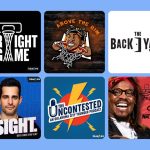Watch out, with rising interest rates and stubborn inflation, the economy is headed toward a “hard landing.” Or is it more like a “slow-motion train wreck”? No, surely there’s something “mild” or even “garden variety” on the way—maybe a “rolling recession”? Confused? You’re not alone. Those are all predictions from billionaire investors, renowned economists, and the top minds on Wall Street given in the past year alone.
Nearly in unison, America’s business class has routinely predicted impending doom for the economy, only to later admit that their forecasts may have been a bit premature. And while most experts agree that risks of recession remain high, there’s an increasing number of reasons to be optimistic, from fading inflation and healthy consumer balance sheets to new evidence that small businesses are coping with the post-COVID world better than expected.
All of these conflicting signs aside, one thing is now clear, the engine of the U.S. economy—small business—has remained incredibly “resilient,” Tom Sullivan, vice president of small-business policy at the U.S. Chamber of Commerce, who previously served in the U.S. Small Business Administration under George W. Bush, told Fortune on Friday.
Sullivan pointed to data from the newly released MetLife and U.S. Chamber of Commerce Small Business Index, which rose to 63.1 in the second quarter, up from 60 in the first quarter. The index is meant to provide a snapshot of the health of small businesses and measure their economic outlook using a rating of one to 100, with a higher score indicating a more positive reading.
Some 47% of small businesses in the second quarter survey said they plan on increasing their hiring next year. That’s up from 37% in the first quarter, and a record high since the survey began in 2017. “The hiring optimism was one of the most shocking and encouraging signs that I saw in this latest data,” Sullivan said. Revenue expectations also reached an all-time high, with 71% of small businesses saying they expect to increase revenues next year.
The survey of 752 small businesses nationwide, which are defined as those with 500 employees or fewer, also offered some conflicting results, however.
Small businesses have been under pressure from stubborn inflation as well as rising interest rates that have dramatically increased their borrowing costs for over a year now. As a result, inflation remained the “top challenge” for 54% of small-business owners in the second quarter, with rising interest rates moving to the second spot at 23%.
On top of that, as Fortune previously reported, an ongoing credit crunch is causing problems for many small businesses. After regional banks’ bout of instability in March, headlined by Silicon Valley Bank’s rapid collapse, banks nationwide have begun tightening their lending standards, making it more difficult for small businesses to get loans. In the Small Business Index survey, 73% of small-business owners said it’s now more challenging to borrow money for their business than it was a year ago.
For Sullivan, the mix of positive and negative results in the latest small-business survey was a bit perplexing at first glance. “How on earth can a group of businesses be facing these types of headwinds, with inflation and rising interest rates, and still have record-breaking plans to hire and record-breaking expectations for revenue? The two do not necessarily seem to go together,” he told Fortune.
But the veteran lawyer and small-business expert cautioned investment banks and leading economists not to brush off small businesses’ optimism, arguing there’s a reason they’re so bullish. “There’s confidence that people are going to keep spending,” he explained. “And the numbers start to make sense when you look at what I call the COVID suit of armor.”
New business formation and the ‘COVID suit of armor’
The COVID lockdown era was one of the most difficult times in history for U.S. small businesses, but, according to Sullivan, many firms made it out much stronger than they went in, and now they’re optimistic about a future without a demand-killing global pandemic to battle.
“Small businesses are like: ‘Hell, if I can make it through COVID, where the government actually forced me to shut down, I can make it through anything,’” he told Fortune, pointing to data that shows nearly 80% of small-business owners are “optimistic” about their long-term future. “That’s very different from being naive. That is personal experience, it’s putting on a COVID suit of armor and saying I can go through hell and back, because that’s where I’ve been, and compared to that, things look pretty good.”
Sullivan also pointed out that the number of new business applications in the U.S. spiked to a record high in 2020 after COVID lockdowns led to a wave of layoffs and left many workers on their own. But even now, the figure remains well above pre-pandemic levels, according to data from the Census Bureau.
Monthly total business applications hit 436,048 in May, that’s up from 300,490 in February 2020. And high-propensity business applications—those deemed to have a strong chance of turning into actual businesses with a consistent employee payroll by the IRS—have also surged in recent years and remain elevated. This should help boost the overall economy, as some 44% of economic activity was generated by small businesses in 2019, according to the Small Business Administration.
Small Business Administration
While small businesses may not be in the dire straits that some economists expected earlier this year, they’re not out of the woods just yet. Many are struggling to find talent even as the labor market slows. “I worry about workforce shortages,” Sullivan said. “That is small businesses’ biggest threat; they could run into a brick wall if there’s nobody to hire.”
There’s also a reason so many economists have warned that a recession could be on its way as the Fed raises rates. Some three out of four small-business owners surveyed said higher rates have limited their ability to raise capital, and 50% said they’ve delayed growth plans as a result. Eventually, if the Fed keeps raising rates, small businesses could hit a breaking point, where elevated borrowing costs slow their hiring plans and revenue growth considerably.
As Sullivan explains, owners may end up being victims of their own success.
“Inflation may not keep going down if spending continues to be up, even with rising interest rates,” he said. “So, on the one hand, small businesses can be in growth mode. But on the other hand, unfortunately, the Federal Reserve is likely to raise rates again, as they are desperate to try to calm down some of the activity going on.”
Read the full article here










